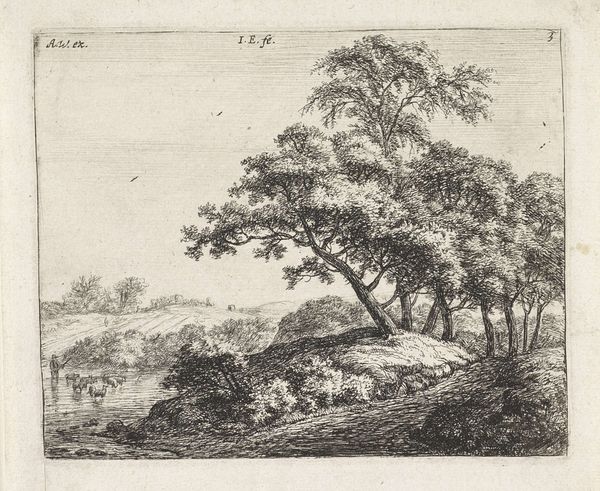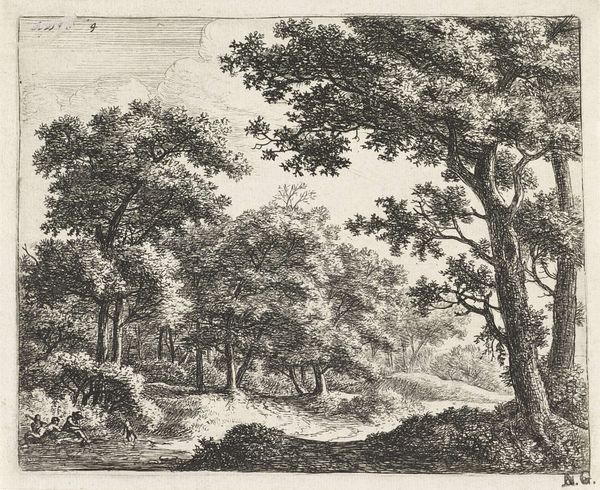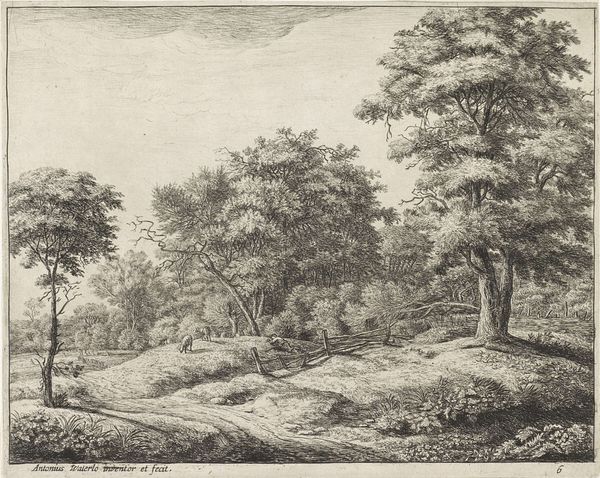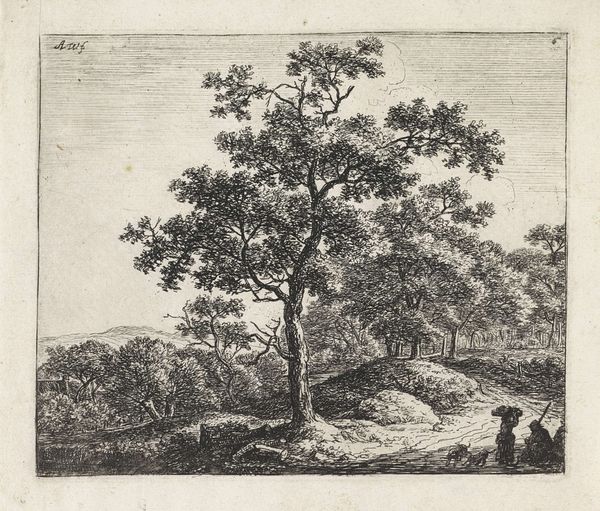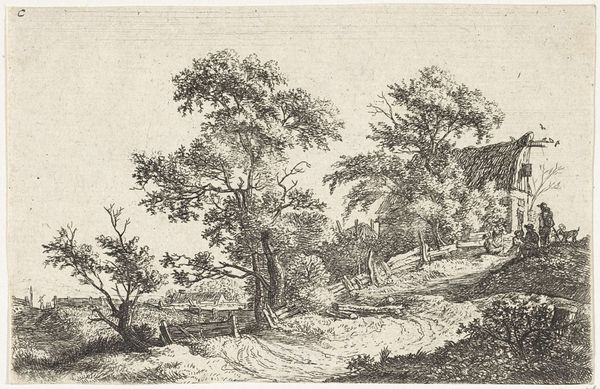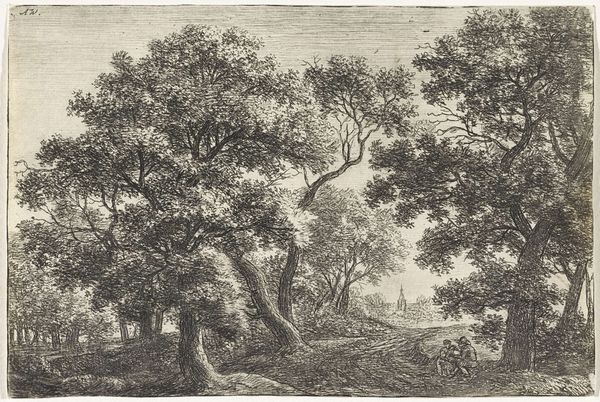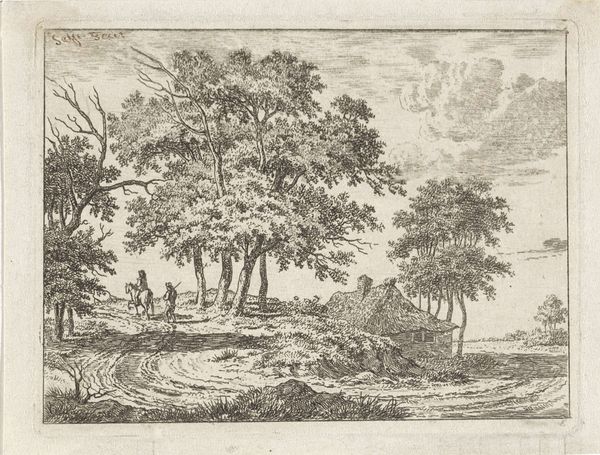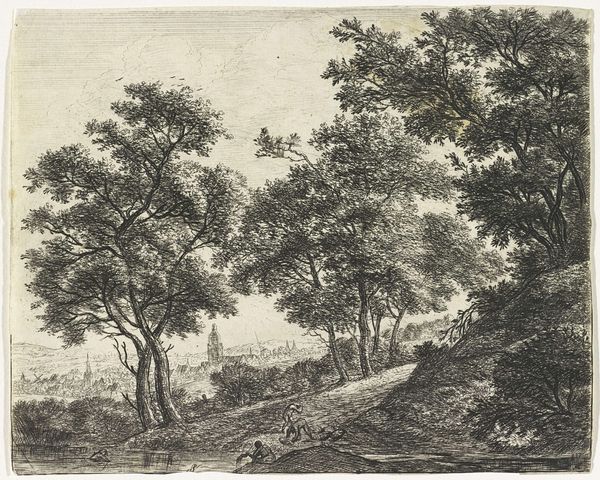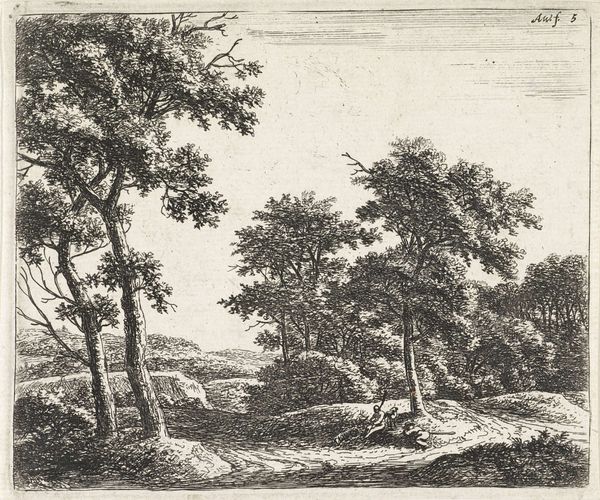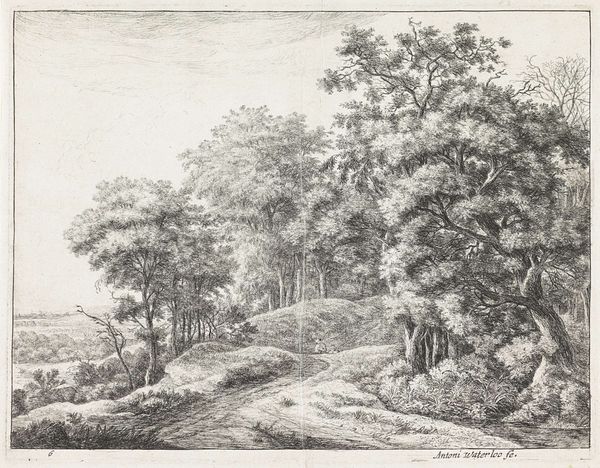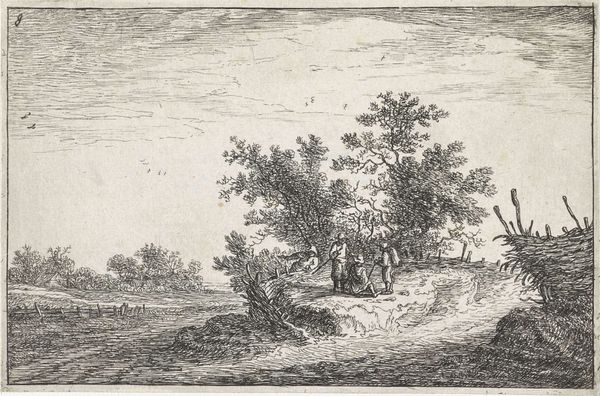
print, etching
#
dutch-golden-age
# print
#
etching
#
landscape
#
river
#
forest
Dimensions: height 115 mm, width 141 mm
Copyright: Rijks Museum: Open Domain
Jacob Esselens made this etching of sheep in a river sometime in the 17th century. The etching process involves using a sharp needle to draw into a metal plate, which is then submerged in acid. The acid bites away at the exposed metal, creating recessed lines that hold ink. Here, Esselens uses this technique to capture a pastoral scene: sheep wading through water, trees heavy with foliage, and a shepherd standing guard. The image is made up of a dense network of fine lines, each one carefully placed to create a sense of depth and texture. Look at how the etching captures the rough bark of the trees, and the rippling surface of the water. Printmaking allowed artists like Esselens to disseminate their work widely, tapping into a growing market for images. The availability of prints also democratized art, making it accessible to a wider audience. Esselens’s etching reflects a broader cultural shift towards valuing scenes of everyday life and labor. It’s a testament to the power of simple materials, and the labor involved in bringing an image to life.
Comments
No comments
Be the first to comment and join the conversation on the ultimate creative platform.
